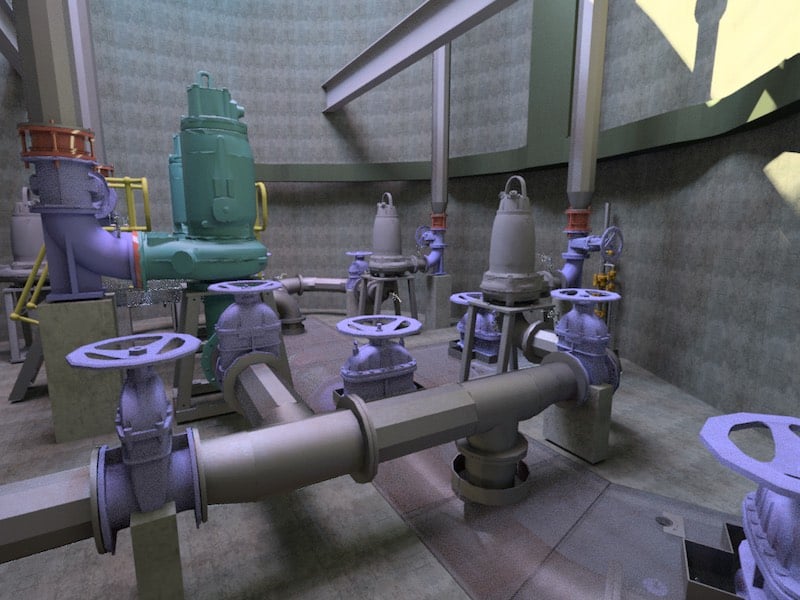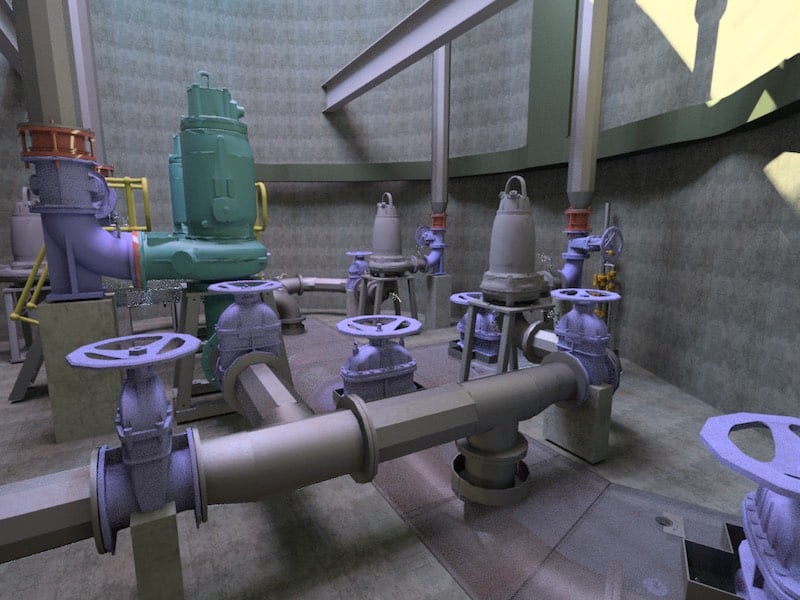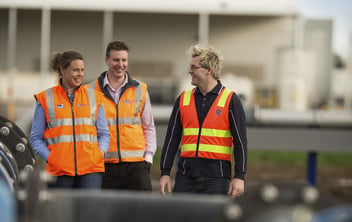Sydney Water digital twins build smarter infrastructure

Digital twins are a water infrastructure focal point right now, but while utilities all over Australia are getting involved in this advanced approach to asset management, one digital engineering specialist said we’re not there just yet.
However, with careful planning and implementation, the greater extent of what digital twinning technology can offer the sector will very soon be a reality.
As part of the Water Source asset management series, we spoke to Australian Water Association Asset Management Specialist Committee member and Sydney Water Digital Engineering Integration Specialist Clarissa Phillips about how the largest utility in Australia has planned it’s digital transformation.
“We provide safe drinking water to more than five million people across Sydney, the Blue Mountains and the Illawarra, as well as recycled and wastewater treatment services,” she said.
“Sydney Water is using a digital engineering standard-based framework to improve the way our assets are planned, designed, constructed, operated and maintained throughout their lifecycle in the development of our digital twins.
“Digital twins are digital representations of physical assets, processes or systems that connect us with its physical counterpart to optimise value throughout the asset lifecycle.”
Phillips said one of Sydney Water’s core focuses is around building a better life with world-class water services and therefore digital twinning is a natural next step for the utility.
“Having a digital twin of our assets enables us to build smart cities by building more sustainable and resilient water infrastructure. This also aligns with our focus areas, including asset lifecycle, optimisation and insight-led decision making,” she said.
“The aim of Sydney Water’s digital twins in the future will be to automate asset management decisions.”
Planning for digital twins
With Sydney Water working with delivery partners across the city, Phillips said the utility has put a lot of forethought into how best to approach such a big job.
“We are doing this in conjunction with our delivery partners. We’ve got three consortiums delivering across three different branches: the north, the south and the west. Together, we have developed our digital engineering standard,” Phillips said.
“We’ve been developing project information models together, we are now in the design phase of our infrastructure projects, and they will become asset information models, or digital twins, that will be handed over to Sydney Water so that they can be used in a digital operating environment.
“We’ll be developing these models in stages over the next 10 years. There’s no way this work can happen overnight. It’s going to take time. A lot of water businesses are preparing to go down this path, some of us have started, but we’re not there yet.”
From year one to five, Sydney Water will build up its asset information model, with years six to 10 focused on moving the models over to Sydney Water’s digital operating environment.
“In the first year we are standardising, which means smart, virtual digital asset management and creation. The second year will focus on collaboration; we’ll be introducing new technologies, coordination practices and improved project performance,” Phillips said.
“The following year is about integration. It’s about coming up with a common data environment, setting up new processes and managing the information through new technologies and platforms.
“The next year will be about visualisation, focused on new ways of working, real-time performance metrics and modelling. The final year is about optimisation, which is about automation, simulation, analytics, machine learning and an insights-driven approach.
“Not only are we allowing our delivery partners time to set themselves up for success in delivering in this new way, we are also getting Sydney Water ready to receive this asset information. It really is a digital transformation for Sydney Water.”
Data driven
Collaboration has been essential throughout Sydney Water’s process, Phillip said, which has required taking a much closer look at how people use data and how to better manage data — a very important step that will underpin success in future.
“We want to make sure we set our data up well in the design phase. We are currently at the end of year one — our standardisation phase. We are using the completion of this stage to take stock of the here and now to understand how Sydney Water is capturing and processing its data,” she said.
“We are going to look at ways that digital engineering can improve this process by creating more efficiencies and a consistent approach to identifying our assets, and by introducing automation to a lot of the manual handling of data.
“Getting this data ready now means we can build a common data environment for all of our project information.
“It will help us become a lot better at asset information and lifecycle management. The partners can provide quality data during the project delivery phase that has been automatically verified before it enters into Sydney Water’s system. Getting this right will set us up for success.”
Next wave benefits
While there’s still a lot of work to be done before the best of digital twinning becomes a widespread reality, Phillips said the wheels are in motion and the utility is looking forward to making the most of the benefits.
“This is going to be a game-changer for Sydney Water. More reliable data means more informed asset planning decisions can be made,” she said.
“We’ll be able to better understand how our assets behave throughout their lifecycle and enable new ways of working, including utilising data analytics for predictive maintenance and planning our infrastructure. We are creating a central source of truth for our data."
In the design phase, Sydney Water will be able to simulate real-world situations digitally before they are built, Phillips said.
“This will save on construction costs and make our sites a safer place to work. It’s also a better way to engage with stakeholders, they will be able to visualise what we are planning to build,” she said.
“We can also use smart live data from our Internet of Things sensors and our smart meters to enhance our existing water infrastructure. We can use this information to design better infrastructure to suit our future customers’ needs.”
Sydney Water is selecting specific projects for digital twinning during the five-year development phase.
“Our delivery partners are working on about five projects a year, under each of the stages,” Phillips said.
“But we will be applying this digital engineering approach to any new assets we build, particularly in Western Sydney, in order to build on the smart city approach being taken there.”


